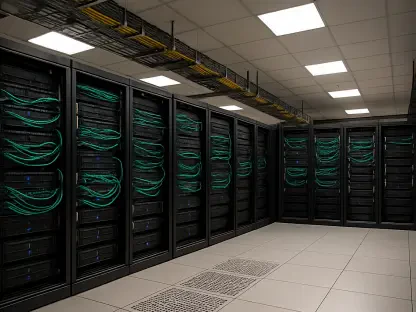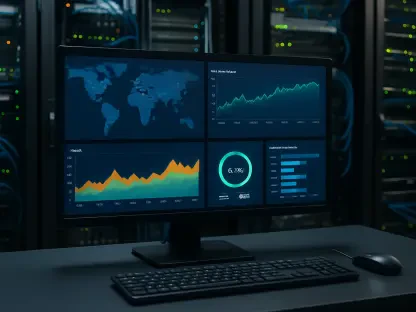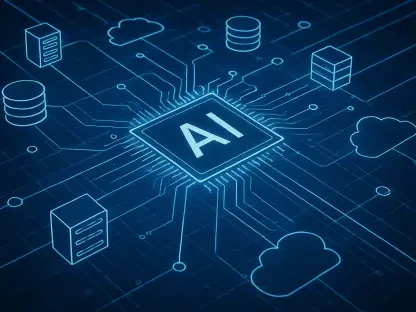I’m thrilled to sit down with Matilda Bailey, a renowned networking specialist with a deep focus on cutting-edge technologies like cellular, wireless, and next-gen solutions. With her finger on the pulse of the tech industry, Matilda offers unique insights into the explosive growth of artificial intelligence and its transformative impact on global markets. In our conversation, we explore the staggering projections for AI spending, the pivotal role of infrastructure and big tech, the integration of AI into everyday devices, and the challenges businesses face in this rapidly evolving landscape.
Can you walk us through the massive growth projected for global AI spending in the coming years?
Absolutely. The numbers are staggering—global AI spending is expected to hit nearly $1.5 trillion this year alone, and by 2026, it’s forecasted to surpass $2 trillion. These projections come from extensive market analysis, looking at current investment trends, adoption rates across industries, and the increasing integration of AI into both consumer products and enterprise solutions. The jump to over $2 trillion is driven by a combination of factors, including the demand for AI-powered infrastructure, the embedding of AI into everyday tech like smartphones, and the sheer necessity for businesses to stay competitive in a digital-first world.
What are the primary areas where we’re seeing the biggest spikes in AI investments?
One of the standout areas is AI-optimized servers, with spending projected to nearly double to around $330 billion in just a couple of years. These servers are critical for handling the intense computational demands of AI models, especially generative AI. Beyond that, there’s significant growth in AI applications and infrastructure software as well. While services and applications are expanding, infrastructure—think servers, chips, and cloud solutions—often takes the lion’s share because it forms the backbone of AI deployment at scale.
How are major tech giants and emerging players shaping this AI investment boom?
Big tech companies, especially large hyperscalers, are pouring massive resources into AI infrastructure, building out data centers with specialized hardware like GPUs to support AI services at a global scale. Their investments are a key driver of growth. At the same time, we’re seeing new entrants, particularly from regions like China, stepping up with innovative AI cloud services. This isn’t just a game for the usual suspects anymore—venture capital is also fueling startups and smaller players, creating a more dynamic and competitive landscape.
Why is AI becoming such a common feature in consumer devices like smartphones and PCs, even when people aren’t explicitly asking for it?
It’s largely about future-proofing and market trends. Manufacturers are embedding AI into devices as a standard feature because they anticipate it will soon be a baseline expectation. When someone buys a new PC or smartphone today, they’re often getting AI capabilities—whether it’s for voice assistants, image processing, or predictive text—without actively seeking them out. It’s a way for companies to stay ahead of the curve and ensure their products remain relevant as AI becomes ubiquitous in operating systems and apps.
What does the surge in AI-optimized servers mean for the traditional tech systems that still run most of the world?
It’s a fascinating shift. Traditional servers still underpin critical systems—everything from banking to e-commerce—but the investment in AI-optimized servers is starting to outpace them. By the end of this decade, we might see more spent on AI-specific hardware than on traditional setups. Importantly, this isn’t about replacing existing investments; it’s additive. AI servers are often deployed for new workloads, like generative AI, creating a parallel stream of spending rather than cannibalizing the old systems.
Why do you think businesses have no choice but to embrace AI right now, even if they have other priorities?
AI isn’t a trend you can opt out of—it’s becoming foundational to how technology operates. By the end of this decade, it’ll be nearly impossible to buy a device or software without some form of AI baked in. For businesses, ignoring AI means falling behind on efficiency, customer experience, and innovation. Even if other issues seem more urgent, AI integration is a long-term necessity that can’t be deferred. It’s about survival in a landscape where competitors are already leveraging AI to gain an edge.
What challenges or uncertainties do you foresee in the AI space over the next few years?
There’s a lot of uncertainty around AI, and it’s not going away anytime soon. We’re looking at a horizon of at least three years where questions about regulation, ethical use, and even the scalability of AI solutions will persist. Businesses are grappling with how to invest wisely without clear guidelines or predictable outcomes. The tech is evolving so fast that it’s hard to plan with certainty, which creates both risk and opportunity for those willing to navigate the ambiguity.
What is your forecast for the future of AI adoption across industries?
I believe we’re just at the beginning of a massive wave of AI adoption. Over the next five to ten years, every industry—from healthcare to retail to manufacturing—will see AI become as fundamental as the internet is today. We’ll see deeper integration into workflows, more personalized consumer experiences, and likely some consolidation as smaller players either innovate or get absorbed by bigger ones. The key will be balancing innovation with responsibility, ensuring AI serves humanity without unintended consequences.









